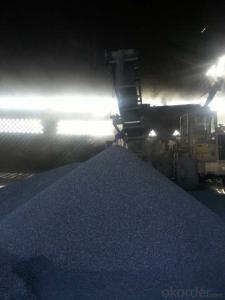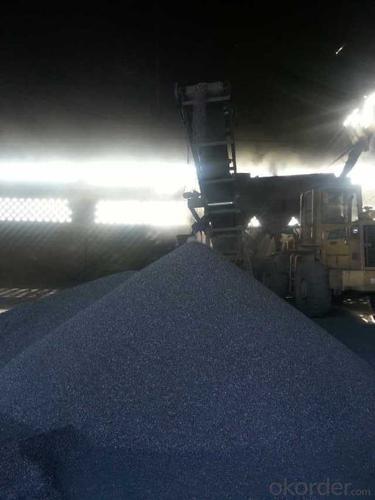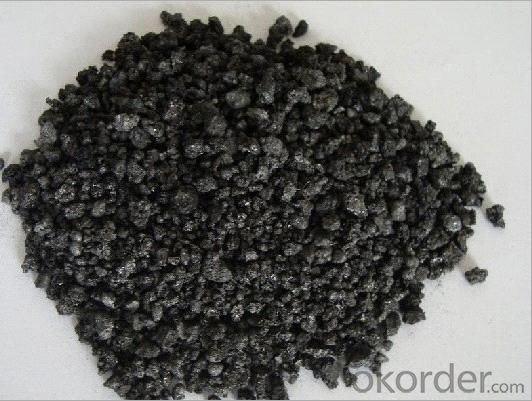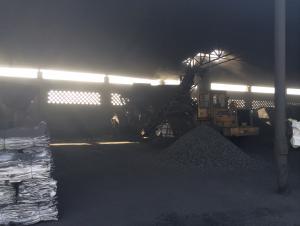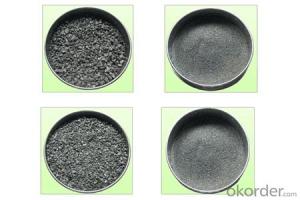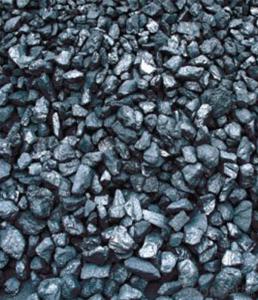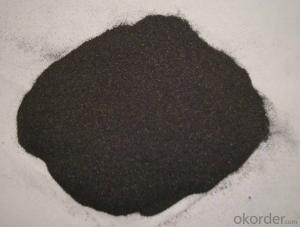Carbon Additive FC 90% CNBM China Product
- Loading Port:
- China main port
- Payment Terms:
- TT OR LC
- Min Order Qty:
- 0 m.t.
- Supply Capability:
- 100000 m.t./month
OKorder Service Pledge
OKorder Financial Service
You Might Also Like
Packaging & Delivery
| Packaging Detail: | 25kgs/50kgs/1ton per bag or as buyer's request |
| Delivery Detail: | Within 20 days after receiving corect L/C |
Specifications
Calcined Anthracite
Fixed carbon: 90%-95%
S: 0.5% max
Size: 0-3. 3-5.3-15 or as request
Calcined Anthracite is produced using the best Anthracite-Taixi Anthracite with low S and P, It is widely used in steel making and casting.
General Specification of Calcined Anthracite:
PARAMETER UNIT GUARANTEE VALUE | |||||
F.C.% | 95MIN | 94MIN | 93MIN | 92MIN | 90MIN |
ASH % | 4MAX | 5MAX | 6MAX | 7MAX | 8MAX |
V.M.% | 1 MAX | 1MAX | 1.5MAX | 1.5MAX | 1.5MAX |
SULFUR % | 0.5MAX | 0.5MAX | 0.5MAX | 0.5MAX | 0.5MAX |
MOISTURE % | 0.5MAX | 0.5MAX | 0.5MAX | 0.5MAX | 0.5MAX |
Size can be adjusted based on buyer's request.
Pictures of Calcined Anthracite:
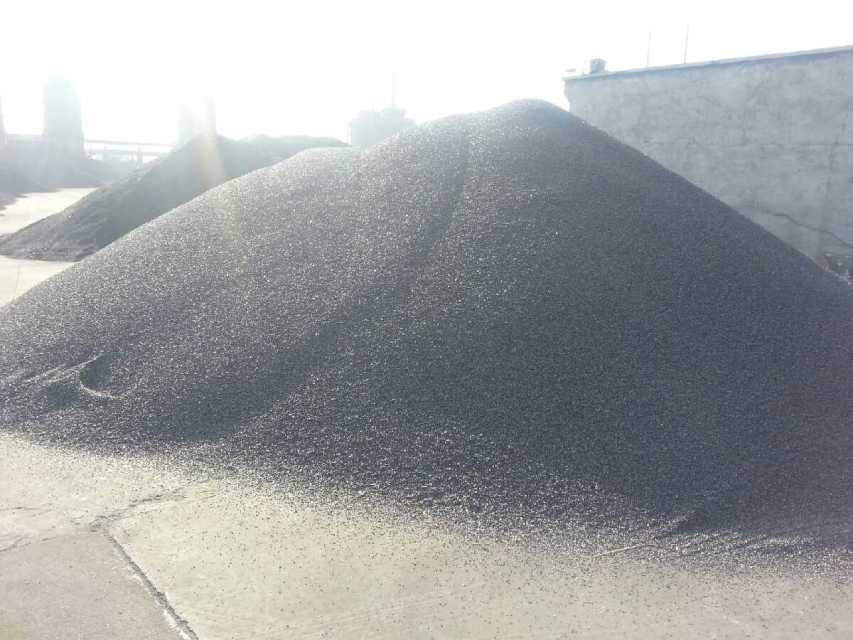
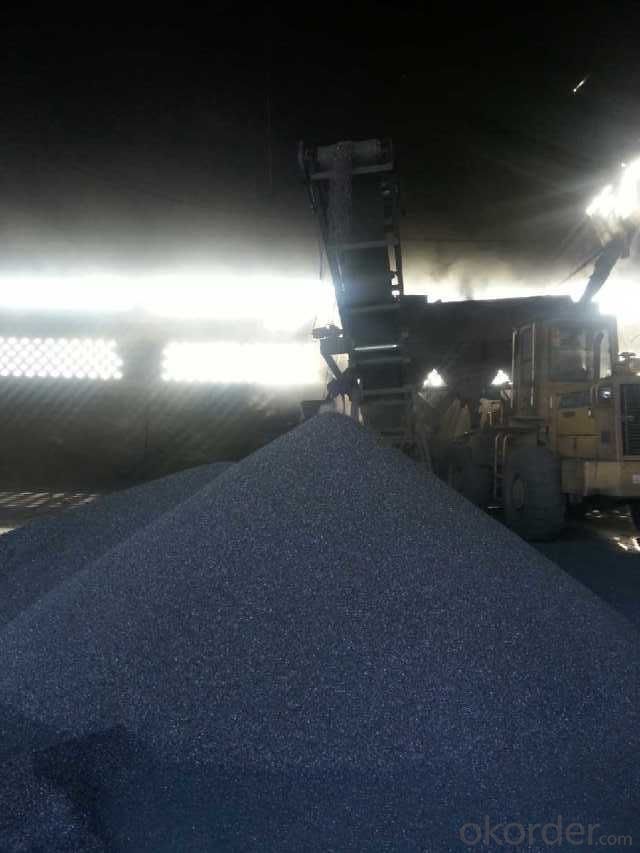

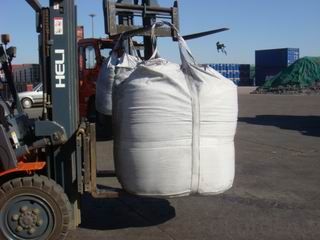
We can supply below furnace charges, please feel free to contact us if you areinterested in any of any of them:
Coke (Metallurgical, foundry, gas)
Calcined Anthracite with fixed carbon from 90% to 95%
Calcined Petroleum Coke
- Q: How does carbon impact the structure and function of ecosystems?
- Carbon is a fundamental element that plays a crucial role in shaping the structure and function of ecosystems. It is a building block of life, present in all living organisms, and is constantly cycling between the atmosphere, living organisms, and the Earth's surface. Carbon impacts ecosystems in various ways, both directly and indirectly. Firstly, carbon is a key component of organic matter, such as plants, animals, and decomposing organic materials. It provides the energy and nutrients necessary for the growth and development of organisms. Through photosynthesis, plants absorb carbon dioxide from the atmosphere and convert it into organic compounds, primarily carbohydrates, that serve as a source of energy and building material for other organisms. This process forms the basis of the food chain, as herbivores consume plants and carnivores consume herbivores. Thus, carbon is essential for the structure and functioning of ecosystems by sustaining the productivity and biodiversity of organisms within them. Moreover, carbon influences the physical structure of ecosystems. In terrestrial ecosystems, carbon is stored in vegetation and soils, forming carbon sinks. Forests, for example, store vast amounts of carbon in their biomass and soils, playing a crucial role in mitigating climate change by absorbing and sequestering carbon dioxide. The loss of these ecosystems, through deforestation or degradation, can release large amounts of carbon back into the atmosphere, contributing to the greenhouse effect and climate change. In marine ecosystems, carbon is stored in the form of dissolved inorganic carbon, which can impact ocean acidity. The increasing concentration of carbon dioxide in the atmosphere leads to ocean acidification, affecting the growth and survival of marine organisms, particularly those with calcium carbonate shells or skeletons, such as corals and mollusks. Furthermore, carbon influences the functioning of ecosystems through its role in nutrient cycling. Decomposition, the process by which organic matter is broken down and recycled, is largely driven by microorganisms that respire carbon dioxide. Decomposition releases nutrients such as nitrogen, phosphorus, and sulfur back into the soil, making them available for uptake by plants. This nutrient cycling is essential for maintaining the productivity and nutrient balance within ecosystems. Changes in carbon availability can affect the rates of decomposition and nutrient cycling, which in turn can impact the structure and functioning of ecosystems. Overall, carbon is a fundamental element that significantly impacts the structure and function of ecosystems. Its role in energy transfer, organic matter formation, nutrient cycling, and climate regulation makes it essential for the sustainability and functioning of all living organisms within an ecosystem. Understanding and managing carbon dynamics is crucial for maintaining the health and resilience of ecosystems in the face of environmental changes.
- Q: Glucose contains resveratrol (C14H12O3) to determine the mass ratio of resveratrol and carbon dioxide of the same quality as carbon dioxide
- They are x and y, containing carbon equal, according to the mass of an element = the mass of a compound * the elementMass fractionFor C14H12O3, the carbon mass fraction is C%=12*14/ (12*14+12+16*3) *100%=73.68%For CO2, the mass fraction of carbon is 12/ (12+16*2) =27.27%There is x *73.68%=y*27.27%So there's X: y =57:154
- Q: Excuse me, carbon steel, carbon steel pipe, seamless steel pipe, spiral steel pipe, what is the difference?
- According to the appearance shape are distinguished; the so-called carbon steel pipe; welded steel pipe should be called and said seam tube material, ordinary carbon steel, the whole tube has a longitudinal seam, by forming a so called drawing strip heating tube. Carbon steel plate is composed of ordinary carbon steel plate; a winding connection of a suitable low temperature and low pressure carbon steel plate which is called muons. Seamless steel tube is made by heating the tube blank.
- Q: Is there any difference between carbon plate and universal board?
- Generally referred to as "Pu plate" is "hot-rolled ordinary carbon structural steel plate", usually refers to single rolled steel plate (original flat plate). The common grades are: Q235, Q345, SS400, St12 and so on.Usually referred to as "carbon tie plate" refers to the "ordinary carbon structural steel hot-rolled coil", refers to the continuous rolling process with hot rolling mill rolling, finished products are steel coil delivery of ordinary carbon steel plate (coil).
- Q: What is the composition of carbon in stainless steel?
- The quality and performance of steel are determined according to needs, and different elements should be included in different requirements(1) carbon, the higher the carbon content, the higher the hardness, but its plasticity and toughness are worse(2) sulfur is the harmful impurity in steel. The steel with high sulfur content is easy to crack when it is processed by high temperature. It is usually called hot brittleness(3) p; can make the plasticity and toughness of the steel decreased significantly, especially at low temperature is more serious, this phenomenon is called cold brittleness. In high-quality steel, sulfur and phosphorus must be strictly controlled. But on the other hand, sulfur and phosphorus containing high in low carbon steels, can make the cutting easily broken, is benefit to improve the machinability of the steel is.(4) manganese; can improve the strength of steel, can weaken and eliminate the adverse effects of sulfur, and can improve the hardenability of steel, manganese content of high alloy steel (Gao Menggang) has good abrasion resistance and other physical properties.(5) silicon; it can improve the hardness of steel; but the plasticity and toughness decrease; the steel used in the electrician contains a certain amount of silicon, which can improve the soft magnetic properties(6) tungsten can improve the red hardness and heat strength of steel, and can improve the wear resistance of steel
- Q: How does carbon impact the energy balance of the Earth?
- Carbon impacts the energy balance of the Earth primarily through its role in the greenhouse effect. Carbon dioxide (CO2), a greenhouse gas, is released into the atmosphere through natural processes and human activities such as burning fossil fuels and deforestation. The greenhouse effect is a natural process where certain gases in the atmosphere trap heat from the sun, preventing it from escaping back into space. This process helps maintain a suitable temperature for life on Earth. However, excessive carbon emissions have enhanced the greenhouse effect, leading to global warming and climate change. When carbon dioxide and other greenhouse gases accumulate in the atmosphere, they trap more heat, causing the Earth's surface temperature to rise. This rise in temperature disrupts the energy balance of the planet. It contributes to the melting of polar ice caps, rising sea levels, and more frequent and severe extreme weather events. Furthermore, carbon affects the energy balance of the Earth by altering the carbon cycle. The carbon cycle is a natural process in which carbon is exchanged between the atmosphere, oceans, and land. However, human activities have significantly disrupted this cycle by releasing large amounts of carbon into the atmosphere, primarily through the burning of fossil fuels. Excessive carbon emissions result in an imbalance in the carbon cycle, as the natural processes that absorb and store carbon, such as photosynthesis and the ocean's ability to absorb CO2, cannot keep up with the pace of emissions. This leads to an accumulation of carbon dioxide in the atmosphere, further exacerbating the greenhouse effect and contributing to global warming. Overall, carbon significantly impacts the energy balance of the Earth by intensifying the greenhouse effect and disrupting the natural carbon cycle. It is crucial to reduce carbon emissions and transition to cleaner and more sustainable energy sources to mitigate the negative effects of carbon on the planet's energy balance and ultimately, preserve the health and stability of our environment.
- Q: What are the properties of carbon-based adhesives?
- Carbon-based adhesives have several properties that make them versatile and widely used in various industries. Firstly, carbon-based adhesives are known for their excellent bonding strength. They have the ability to create strong and durable bonds between different materials, including metals, plastics, ceramics, and composites. This makes them suitable for applications where a reliable and long-lasting bond is required. Another important property of carbon-based adhesives is their high temperature resistance. They can withstand extreme temperatures without losing their adhesive properties, making them ideal for applications in high-temperature environments. This property also allows carbon-based adhesives to be used in industries such as aerospace and automotive, where components are subjected to elevated temperatures. Carbon-based adhesives also possess good chemical resistance, meaning they can withstand exposure to various chemicals without degradation. This property makes them suitable for use in industries where adhesives may come into contact with solvents, fuels, or harsh chemicals. Additionally, carbon-based adhesives exhibit excellent electrical conductivity. This property allows them to be used in applications where electrical or thermal conductivity is required, such as in the electronics industry. Furthermore, carbon-based adhesives often have low shrinkage and low outgassing characteristics. This means that they do not significantly change in size or release volatile substances during curing, minimizing the risk of damage or contamination to surrounding materials. Overall, carbon-based adhesives offer a combination of high bonding strength, temperature resistance, chemical resistance, electrical conductivity, and dimensional stability, making them a preferred choice in various industries where reliable and durable bonding solutions are needed.
- Q: What are the differences between the three carburizing, nitriding and carbonitriding? What are the different effects on the material?
- Without quenching, it can have high hardness, wear resistance, fatigue resistance, a certain degree of corrosion of the river, and the deformation is very smallCarbonitriding is also called cyaniding.
- Q: The difference between double offset paper and carbon free printing paper
- The use of the two is entirely different.Double offset paper is a printing paper. It is a higher quality printing paper. The contrast, flexibility and surface strength have higher requirements, and the acidity and basicity of the paper should be close to neutral or weak alkaline.Double gummed paper refers to printing paper, also called offset paper. Culture, printing paper paper one of the typical representative, in the business of two-sided offset paper (two-sided offset paper) commodity name, the old road / Taiwan area with a ream of paper, also called die rough paper.Carbon free copy is just typing paper and coating. Paint is divided into two kinds, one kind of colored, one kind of colorless.
- Q: How does carbon impact the global water cycle?
- The global water cycle can be significantly influenced by carbon through various mechanisms. One major way in which carbon affects the water cycle is through the process of photosynthesis. During photosynthesis, plants and trees absorb carbon dioxide from the atmosphere and convert it into oxygen and glucose. This not only contributes to the carbon cycle but also plays a vital role in the water cycle. When plants undergo photosynthesis, they release water vapor into the atmosphere via small pores called stomata. This water vapor contributes to the overall humidity in the atmosphere, leading to increased cloud formation. Clouds, in turn, play a critical part in the water cycle as they contain condensed water droplets that eventually precipitate. Furthermore, carbon dioxide is a greenhouse gas that contributes to global warming and climate change. As the Earth's temperature rises due to increased levels of carbon dioxide, it has an impact on the water cycle as well. Warmer temperatures can result in higher rates of evaporation, leading to more water evaporating from oceans, rivers, and lakes. This excess moisture in the atmosphere can lead to more intense rainfall events, causing floods and other extreme weather phenomena. Moreover, carbon dioxide can affect the acidity of water bodies. When carbon dioxide dissolves in water, it forms carbonic acid, which can lower the pH of the water. This process, known as ocean acidification, can have detrimental effects on marine life, especially organisms that rely on calcium carbonate for their shells and skeletons. These impacts can disrupt ecosystems' balance and have long-term consequences for the health and functioning of the global water cycle. To summarize, carbon exerts a profound influence on the global water cycle through processes like photosynthesis, greenhouse gas emissions, and ocean acidification. Understanding these interactions is vital for managing the environmental effects of carbon and ensuring the sustainability of the water cycle.
Send your message to us
Carbon Additive FC 90% CNBM China Product
- Loading Port:
- China main port
- Payment Terms:
- TT OR LC
- Min Order Qty:
- 0 m.t.
- Supply Capability:
- 100000 m.t./month
OKorder Service Pledge
OKorder Financial Service
Similar products
Hot products
Hot Searches
